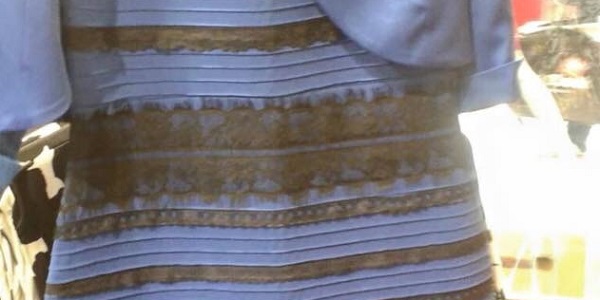
March 1, 2015, by Oliver Thomas
Singing the blues
Mark Bradley hunts for the ‘missing’ colours in the ancient world
The ancient Greeks and Romans probably would have wondered what the fuss is about. They would have seen a dress that looked slightly different depending on the viewer’s angle. They might have thought it peculiar as fashion – more like a costume for comedy than something a self-respecting woman would wear. But they certainly wouldn’t have pored over two-dimensional images of the thing, or thought to debate whether they were seeing black and blue or gold and white.
Why? Well William Gladstone (not only the Prime Minister but also a proficient Homeric scholar) was partly right when he claimed, 150 years ago, that the ancients didn’t have a term that corresponded straightforwardly to ‘blue’, and that they just didn’t seem that interested in colour at all. Homer’s sky is frequently ‘broad’ or ‘starry’ but never ‘blue’; his colour vocabulary is dominated by white and black, with a smattering of red, yellow, violet, and so on, but blue was conspicuous by its absence. Gladstone inferred that ‘the organ of vision was but partially developed’ among the ancients and that they suffered from some cultural form of colour blindness. That inference is debateable, but Gladstone’s striking claims have determined how we approach ancient colour-vision ever since.
Gladstone’s assertions, and most of the internet debate about this chromatically challenging garment, assume that colours exist in the world independently of how our eyes process what they are seeing. In fact, colour is about much more than lightwaves hitting the retina: colour is in the mind, and as much about nurture as nature. That means colour can tell us a lot about what makes us tick. For instance, primates are good at distinguishing yellow, green and red, not because those are the most salient colours in the world around them but because they help distinguish ripe, unripe and poisonous fruits; the nomadic Dinka of South Sudan describe their environment using the colours of their cattle which form such a pivotal part of their day-to-day life.
For the record, the dress I see above is blue and black. Apparently I’m in the minority here. I suspect this does have something to do with my genes and how the colour-sensitive cones in my retinas deal with light. But this particular colour conundrum doesn’t make me question my eyes’ reliability: I know there are blue things out there, and most of the time I see them just like anybody else.
An article on Friday claimed that no-one could see the colour blue until modern times. But in fact, the Greeks and Romans were surrounded by numerous things that we might call ‘blue’, and they did develop terms to describe them. Glaukos is a difficult Greek adjective which translates variously as ‘stormy’, ‘gloomy’ or ‘dark’, but was almost certainly used to refer to eyes which we would call ‘blue’ (rarities in the ancient Mediterranean). Once they got their hands on lapis lazuli and ‘Egyptian blue’, terms were developed to describe the new palette. Greeks and Romans sailed, swam and fished in the ‘deep blue’ – ocean waters which the Greeks called kuaneos and the Romans caeruleus. The sky was not normally caeruleus, except when the heavens about to open: the clear blue sky in Latin was aerius (‘air-coloured’ or ‘sky-coloured’), and this adjective could be extended to describe things at eye level.
The ancients, of course, had their own coats of many colours. At Rome, for example, Plautus and Ovid had fun describing the outrageous garments of flashy Roman women – ‘wax-coloured’, ‘nut-coloured’, saffron-coloured’, and even little blue numbers that were ‘amethyst-coloured’ or ‘sky-coloured’.
But these poets were having a laugh. The rich dyes infiltrating the metropolis were out of skelter with a conservative Roman colour-vision that reserved its vocabulary for the accurate and incisive description of what mattered. ‘Purple’ mattered, for example – the expensive colour-fast dye extracted from molluscs harvested all around the Mediterranean, and used to stain the clothes of royalty, politicians and priests. What’s more, this dye came in an array of different shades, from red to blue to black, and its crystals sat on the surface of fabrics to refract light in strange and unusual ways. To our eyes it might have posed a colour-challenge comparable to that blue-black/gold-white dress. But to Greek and Roman eyes, what mattered is that this was the colour of prestige and authority.
You can read more about the complexities of ancient colour-perception here, and in my book Colour and Meaning in Ancient Rome(2009). I am currently teaching a worksheet on Gladstone and ancient colour-vision at Nottingham for our second-year module ‘Studying Classical Scholarship’. Next year some of my students will be treated to a whole module on ‘Colour and Culture in the Mediterranean World’.
Image credit: Buzzfeed.

Check out Mark’s interview on this topic on Radio 4 on Monday evening, just before Juliette Binoche talking about Sophocles: http://www.bbc.co.uk/programmes/b0540h09